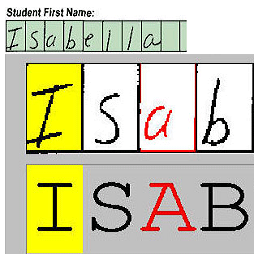The long-tail effect is a common issue that limits the performance of deep learning models on real-world datasets. Character image datasets are also affected by such unbalanced data distribution due to differences in character usage frequency. Thus, current character recognition methods are limited when applied in the real world, especially for the categories in the tail which are lacking training samples, e.g., uncommon characters. In this paper, we propose a zero-shot character recognition framework via radical extraction (REZCR) to improve the recognition performance of few-sample character categories in the tail. Specifically, we exploit radicals, the graphical units of characters, by decomposing and reconstructing characters according to orthography. REZCR consists of an attention-based radical information extractor (RIE) and a knowledge graph-based character reasoner (KGR). The RIE aims to recognize candidate radicals and their possible structural relations from character images. The results are then fed into KGR to recognize the target character by reasoning with a pre-designed knowledge graph. We validate our method on multiple datasets, and REZCR shows promising experimental results, especially on few-sample character datasets.
翻译:长尾效应是一个常见问题,它限制了真实世界数据集深层学习模型的性能。由于字符使用频率的差异,字符图像数据集也受到这种不平衡数据分布的影响。因此,在现实世界中应用当前字符识别方法是有限的,特别是对于缺乏培训样本的尾部类别,例如不常见的字符。在本文中,我们提议通过激进提取(REZCR)来一个零发字符识别框架,以提高尾部几个抽样字符类别的识别性能。具体地说,我们利用基体和字符图形单位,按照正态进行分解并重建字符。REZCR由基于关注的激进信息提取器(RIE)和基于图形的智能智能(KGR)组成。REI旨在识别候选人的激进性及其可能与字符图像的结构关系。然后将结果输入到KGR,以便通过预先设计的知识图表来识别目标特性。我们验证了我们关于多个数据集的方法,REZCR显示有希望的实验结果,特别是在少数卫星特征数据集上。



